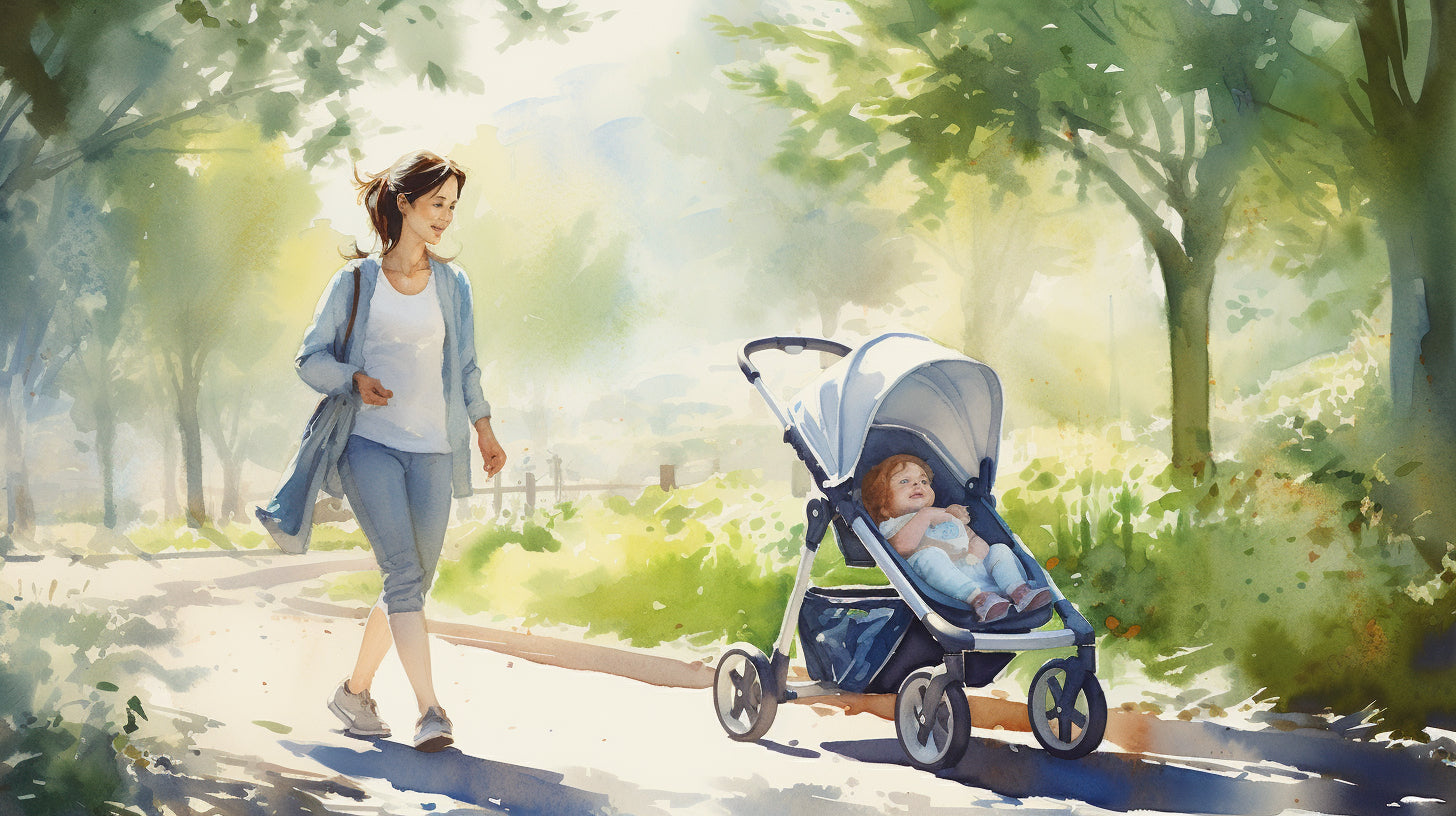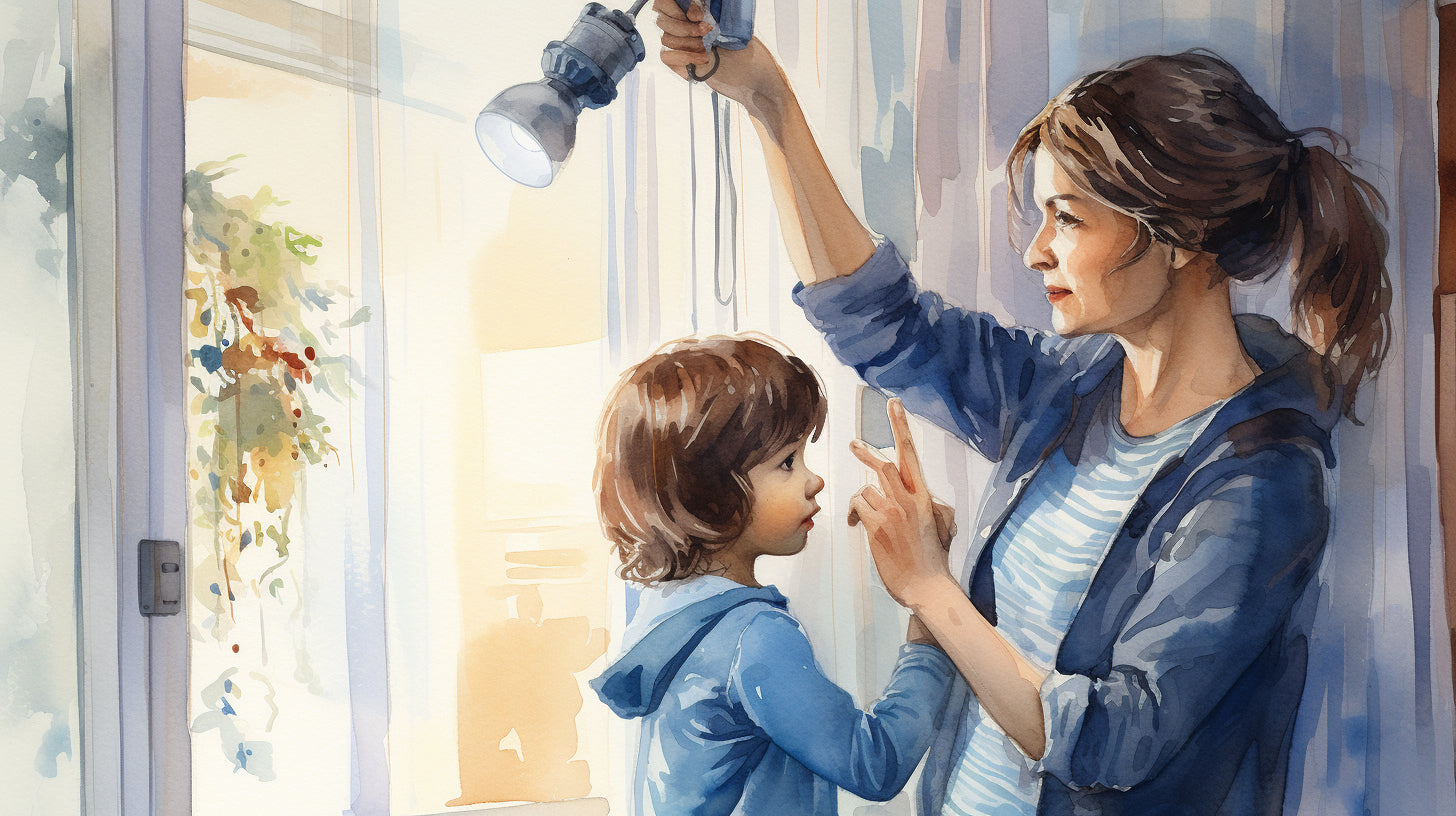Joining the ranks of stay-at-home moms doesn't mean bidding farewell to outdoor fun. On the contrary, having the freedom to schedule your day adds a fresh spin to outdoor adventures. Routine outings, like visits to supermarket, parks, and local sightseeing locales, introduce you to a new world of excitement. But with that excitement, comes the crucial responsibility of safety - yours and the little ones'. In the upcoming sections, we'll explore crucial tips to ensure your outdoor safety without compromising enjoyment. For every beautiful day that calls to you from outside your window, there's an equally essential safety measure we'll help you understand and apply. Because mothers are not just caretakers, but also pioneers and adventurers at heart.
Increasing Interest in Outdoor Activities
The growing passion for outdoor activities is something worth exploring. Interestingly, recent studies have indicated a burgeoning interest among people worldwide in stepping outside and indulging in various forms of outdoor recreations.
There is something invigorating about outdoor activities that isolate them from anything else. Perhaps, it's the thrill of breaking away from routine, or the joy of connecting with the natural world. Or maybe, it fosters a deep sense of achievement that comes with challenging one's physical and mental endurance. Regardless of the reasons, this interest doesn't seem to be abating anytime soon.
Many factors contribute to the increased interest in outdoor activities. The following are some impelling reasons to take note of:
- Yearning for Adventure: The fun of exploring new places and experiences is indeed a major pull for many outdoor activities enthusiasts. The thrill of hiking arduous trails, camping under the stars, or even fishing in tranquil waters rarely fails to appeal to the innate human desire for adventure.
- Health Consciousness: With growing awareness about health and wellness, people are increasingly seeking out activities that allow them to remain active and fit. Outdoor activities provide an enjoyable, non-repetitive way to exercise while also freshening the mind.
- Stress Relief: Our hectic lifestyles often induce ever-increasing stress levels. Participating in outdoor activities allows for a temporary escape from these taxing routines, offering a chance to recharge and relieve stress.
The point to be notable is the shift in attitude towards outdoor activities. Once identified as solely 'holiday activities,' they are seen more as integral to regular daily life.
Undoubtedly, increased participation in outdoor recreations is indicating a greater interest in them - a phenomenon observed in a recent study encompassing a wide range of outdoor activities. This shows a corresponding rise across all sectors of society - from youngsters seeking thrill and adventure to older people pursuing such activities for peace and health benefits.
In sum, the increase in interest in outdoor activities is a positive trend. It encourages healthier lifestyles, offers much-needed leisure time, and nurtures our bond with the environment. And with this growing interest, more activities, services, and products are expected to emerge to cater to these new outdoor enthusiasts. Processing the embedded link, #increasedinterest, offers readers deeper insight into the subject.
With rise in outdoor interests, not only do individuals benefit, but communities, local businesses, and the environment get a boost too. Sharing and promoting this passion can be a beautiful, unifying, and enriching experience for everyone involved.
Communication and Personal Safety Devices
In this modern era where accessibility and constant contact are a given, it's surprising how many of us overlook the absolute necessity of communication when it comes to personal safety. In situations ranging from late-night commutes to fun outdoor adventures, the ability to communicate and send an SOS signal could be a lifesaver. This section focuses on the topic of communication as a crucial part of personal safety, and on personal safety devices that can empower individuals to better protect themselves.
Informing Others of Your Whereabouts
We often take our smartphones and the convenience they bring for granted. They provide a direct lifeline to our loved ones and local authorities in case of emergencies. By simply sharing your trip or destination through a location-sharing app, your loved ones can track where you are and stay updated about your safety. In circumstances where you’re going off the grid, leaving basic information about your plans, such as the place, time of return, and who you are with, can significantly aid search and rescue efforts should they be needed.
Here are some best practices when informing others of your whereabouts:
- Regular updates: In addition to sharing your itinerary, give timely updates to known people about where you are.
- Emergency contacts: Ensure that the emergency feature on your smartphone is updated with the details of people who should be contacted urgently.
Carrying Personal Safety Devices
While communication is crucial for personal safety, carrying a personal safety device can add an extra layer of security. These devices typically come in compact sizes and are designed to effectively alert others in case of an emergency. For example, a personal safety alarm can emit a high-pitched sound that can both deter an attacker and alert people nearby to your distress.
We’ve listed out some suggested personal safety devices below that could be considerable additions to your personal safety arsenal:
- Personal safety alarm: Loud enough to attract attention and help in case of emergencies.
- Pepper spray: A small device with a potent impact when used correctly. Always ensure it's legal in your jurisdiction before carrying one.
- GPS tracker: A device that can be useful, especially when traveling to unfamiliar or remote places.
It is essential to note that while personal safety devices can offer a sense of security and serve as a deterrent, they are not a replacement for being mindful of your surroundings or for the importance of communication. The ultimate objective is to bolster your personal safety through communication and awareness.
So, stay connected, stay safe. Moreover, empower yourself with a personal safety device if it suits your situation and comfort levels. The right combination of both communication and personal safety devices can go a long way in safeguarding your well-being. For more information, check out our page on Communication and Personal Safety Devices.
Weather Considerations for Outdoor Safety
When preparing for outdoor activities, safety is of the utmost importance, and one of the critical factors to consider is the weather. Understanding how different weather conditions impact your safety can mean the difference between a memorable experience and a regrettable one. This article provides helpful tips on avoiding days with thunderstorms, being mindful of rainy weather, and choosing the proper attire for changing weather conditions.
Avoiding Days with Thunderstorms
Thunderstorms are awe-inspiring to watch from the comfort of your home but can pose significant risks when you're outdoors. It's not just the threat of getting soaked; these volatile weather conditions can also spawn dangerous lightning and high winds. If you have outdoor plans and the forecast predicts thunderstorms, it might be safer to postpone or find an indoor alternative. Here are some tips:
- Always check the weather forecast ahead of your planned activity.
- If you notice darkening skies, don't ignore it. It's a sign to seek shelter.
- Plan for an indoor backup activity especially during the peak thunderstorm season.
Being Mindful of Rainy Weather
A slight drizzle might seem inconsequential, but it's necessary to consider the impact of rainy weather on outdoor safety. Wet surfaces can be slippery, making activities like hiking or cycling potentially dangerous. Prolonged exposure to rain can also lead to hypothermia. Here's how to prepare:
- Pack waterproof clothing or gear.
- Be cautious when navigating slippery terrain.
- Keep an eye out for fast-rising water or flash flooding areas.
Proper Clothing for Changing Weather Conditions
The phrase "dress for the weather" holds true when planning outdoor activities. Weather can be unpredictable and change rapidly. It's important to dress in layers that can be added or removed as needed. Venturing out in the wrong attire can lead to discomfort and even serious health risks like frostbite or heatstroke. Here's how to dress smart:
- Consider moisture-wicking fabrics to stay dry and comfortable.
- Include a combination of lightweight and heavyweight pieces in your pack.
- Don't forget key accessories like hats, gloves, and scarves for added protection.
In conclusion, always remember that weather can be a game-changer for outdoor activities. Respect Mother Nature's cues and schedule your activities accordingly. Be alert, be prepared, and stay safe. For a more in-depth understanding, you can read further on the topic of weather considerations for outdoor safety.
Children's Safety Measures
As a parent, ensuring child safety is paramount to you. Regardless of their age, it's crucial to teach your children about safety measures. This involves educating them about the importance of wearing masks, using hand sanitizers, and avoiding stray animals. Here's how you can ensure your children stay safe and understand the significance of these safety protocols.Masks and Hand Sanitizers
In today's world, masks and hand sanitizers have become key safety items. Thanks to ongoing global health concerns, both of these are absolute must-haves when you're stepping out with your child.
Masks: Wearing a mask effectively reduces the chances of exposure to airborne diseases. It's important to educate your child about the right way to wear a mask, covering both the nose and mouth. Show them how to clean reusable masks and dispose of disposable ones correctly. Hand Sanitizers: While washing hands with soap for at least 20 seconds is always the best option, hand sanitizers are the next best solution, especially when you're on the go. Teach your child to use an adequate amount of sanitizer and rub it all over their hands until it's completely dry.Avoiding Stray Animals
While children may naturally gravitate towards animals, it is essential to teach them about the potential risks of interacting with stray animals. Stray animals may harbor diseases that can be transmitted to humans. Have a conversation with your children about the importance of avoiding petting or feeding stray animals. Instead, urge them to inform an adult if they come across a stray animal in need.
Implementing these safety measures can go a long way in protecting your child from potential hazards. Remember, it's through constant reinforcement that these valuable lessons stick. For more information on how to keep your little ones safe, explore our detailed guide on children's safety. It's all about making safety a habit, not a chore!
Buddy System and Planning
In today's fast-paced world, safety should never be taken for granted. And when it comes to outdoor adventures or corporate team-building activities, setting up a robust Buddy System and Planning mechanism can make all the difference. By focusing on personal safety, building trust among team members, and having a solid safety plan in place, we can ensure everyone can enjoy their experiences without unnecessary concerns.
Establishing a Buddy System
A buddy system is an ingenious approach to ensuring everyone's safety, making it an essential part of any group activity. This tried-and-tested method involves pairing up team members. These pairs are then obligated to look out for each other during the activity, promoting camaraderie and a sense of responsibility.
- Creates a support network: If anything ever goes awry, you got someone dependable by your side.
- Enhances communication: Encourages sharing of information, boosting team-building efforts.
- Heightens safety: Allows for immediate response during an emergency, saving crucial time.
Remember, the buddy system is not just about pairing up individuals; it's about fostering a culture of care, support and mutual respect within the team.
Emphasizing Personal Safety
Personal safety should always be a priority in any group activity. No matter how thrilling or fun the event might be, it should never compromise an individual's wellbeing. Here are a few strategies to implement for safeguarding personal safety:
- Encourage open communication: Team members should feel comfortable expressing their concerns or discomforts.
- Invest in the right gear: Wearing appropriate safety equipment can prevent avoidable injuries.
- Provide necessary training: Equip the team with necessary safety knowledge pertinent to the activity.
When personal safety is valued, it not only creates a safer environment but also fosters respect among team members, strengthening team cohesion.
Having a Safety Plan
A comprehensive safety plan acts as a guiding light during emergencies, providing a premeditated pathway to navigate crises effectively. This plan can integrate the buddy system and protocols for personal safety while adding additional layers of caution.
- Outline emergency procedures: Define the steps to be taken during specific emergency situations.
- Identify roles and responsibilities: Detail who’s in charge of what during a crisis, ensuring a structured reaction.
- Set communication channels: Establish clear lines of communication for reporting and managing emergencies.
Hence, with a well-structured safety plan, combined with the buddy system and emphasis on personal safety, we can create a safer and more enjoyable environment for all activities. The success of any group endeavor lies just as much in its safety measures as it does in the fun and camaraderie shared among its members.
Carry Essentials for Safety
There's a certain peace of mind that comes with knowing you're equipped to handle any potential curveballs that life might throw at you. Especially when you're out and about, it's critical to carry with you a collection of essentials items for safety. This way, you can confidently navigate through, knowing that you are prepared for almost any situation that comes your way.
Carrying a Basic First Aid Kit
The importance of a first aid kit can't be overstated. It's one of those things you're always glad to have but hope never to need. A basic pack usually includes:
- Adhesive bandages for minor cuts and scrapes
- Tweezers for removing splinters
- Antiseptic wipes to prevent infection
- Sterile gloves for dressing wounds
Remember, a first aid kit is not just for personal use but also comes handy in assisting others during an emergency. It's an essential item that easily tucks into your bag and makes a substantial impact when required.
Flashlight
While the flashlight on your smartphone might suffice for minor tasks, it's always wise to carry a standalone tool. A flashlight, preferably LED, is brighter, lasts longer, and frees your phone's battery for other functions. Have you ever thought about the distressing scenario of being stuck in a dark place with a dead phone? That's a double tragedy you want to avoid. So, do remember to pack this trusty tool next time you step out.
Appropriate Clothing
Despite our desire to predict it, weather can always take an unexpected turn. To brace for unpredictability - a sudden downpour or drastic temperature drop - carry appropriate clothing based on your location and season. A lightweight, waterproof jacket or a warm sweater could be your saving grace during unforeseen weather changes. Not to mention, a sturdy pair of shoes will help you navigate terrains comfortably, and protect your feet from potential injury.
Living in an unpredictable world requires a proactive attitude towards safety. A few simple-to-carry essentials can dramatically increase the odds of not just surviving but thriving in a difficult situation. So, next time you're heading out, ensure you've got your basics packed and ready to go. Trust us; you won't regret it!
Avoiding Insect-Infested Areas
Isn't it the worst when you try to enjoy outdoor activities and pesky insects decide to turn up uninvited? Have they been the reason behind ruined picnics, family hikes, or gardening sessions? The challenge is even bigger if you find yourself in an insect-infested area. Well, here, we're diving into ways to free yourselves from these unwelcome gate crashers, effectively avoiding insect-infested areas.
So, how do you keep these obstinate little creatures at bay? Follow me down this rabbit hole.
Consider Your Timing
Firstly, consider the timing of your outdoor activities. Insects, especially mosquitoes, are most active during dawn and dusk. If you're planning for an outdoor trip, try to avoid these times. However, if you have no choice, it's essential to equip yourselves with insect repellants or wear clothes that cover most of your body.
Invest in Quality Repellants
Never underestimate the power of a quality insect repellent. Invest in a good one, preferably a DEET-based repellent, that provides protection for a longer duration. Remember to apply it generously and evenly, and make sure to reapply after a few hours.
Proper Landscaping
If you find your garden swarming with insects, perhaps it’s time to consider proper landscaping. Avoid having standing water, as they serve as mosquito breeding places. Additionally, maintaining the lawns and gardens effectively can aid in deterring many insects.
'The world is full of insects, and as long as we love the outdoors, they'll be a part of our experiences. The key is not to banish them from the planet, but to find ways to coexist peacefully.'
The critical step towards smartly avoiding insect-infested areas isn't by triggering a war against these tiny creatures. Instead, it revolves around educating ourselves about their behavior, investing time in preventive measures, and learning how to create environments not very inviting to them.
So the next time you're planning an outdoor activity, consider these steps to keep your memory-making events insect interruption-free!
That's what you call having the triumph in evading the antennaed little impediments!
Conclusion
Navigating the great outdoors confidently begins with effective planning and incorporating essential safety gear. Even as we take pleasure in nature's beauty, safety should always remain our top priority. One reliable way to ensure safety is by investing in quality personal safety devices. At Empowered by Ashley, you'll find a diverse range of items that enhance personal safety, as well as pet care products that guarantee your furry friends' well-being. With these resources in hand, we're better equipped to explore, relax, and make cherishable memories outdoors, knowing we're protected. Remember, a safe adventure is always the best adventure!
Frequently Asked Questions
-
What are some essential outdoor safety tips for stay-at-home moms?
Some essential outdoor safety tips for stay-at-home moms are: 1. Always supervise your children, 2. Teach them about road safety, 3. Use sunscreen and insect repellent, 4. Stay hydrated, and 5. Be cautious of strangers.
-
Why is it important for stay-at-home moms to follow outdoor safety tips?
Following outdoor safety tips is crucial for stay-at-home moms to ensure the well-being and security of their children. It helps prevent accidents, keeps them protected from various outdoor hazards, and promotes a safe and enjoyable outdoor experience.
-
How can stay-at-home moms supervise their children effectively outdoors?
Stay-at-home moms can effectively supervise their children outdoors by maintaining a close proximity, setting clear boundaries, teaching kids to be aware of their surroundings, and engaging in activities that promote safety and learning.
-
What should stay-at-home moms consider when using sunscreen and insect repellent?
When using sunscreen and insect repellent, stay-at-home moms should consider factors like the SPF level, the presence of harmful chemicals, reapplication frequency, the age-appropriateness of the products, and any allergies their children may have.
-
How can stay-at-home moms ensure their children stay hydrated while outdoors?
Stay-at-home moms can ensure their children stay hydrated by encouraging them to drink water regularly, carrying a water bottle while outdoors, offering hydrating fruits and snacks, and recognizing signs of dehydration to take prompt action.




















Leave a comment
This site is protected by hCaptcha and the hCaptcha Privacy Policy and Terms of Service apply.